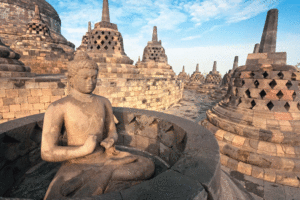Kedar Neupane – TRANSCEND Media Service
1. Introductory Background and the Context
22 Apr 2023 – According to the 2021 Corruption Perceptions Index by Transparency
International, Nepal is one of the most corrupt in South-Asia and it ranks one of the top fifteen
most corrupt in Asia. Corruption is a well-documented issue in Nepal, and several government
institutions and individuals have been implicated in corrupt practices. According to Transparency
International’s Corruption Perceptions Index 2021, Nepal is ranked 117th among 180 countries,
indicating that corruption is still a significant problem in the country. This has not improved in
real terms yet. There have been reports suggesting executive branch of the government,
judiciary, public procurement, security agencies, public transport, health care system and
education sector have been perceived by people involved in corruption.
Examples of corruption shows that corruption and political interference in the judicial system
involving appointment of judges and the handling of high-profile cases; police force’s for
accepting bribes and engaging in other corrupt practices in relation to traffic violations and land
disputes; public procurement process for lacking transparency and accountability, and absence of
performance auditing and collusion of interests; financial mismanagement in health sector in
procurement of medical supplies and equipment; education sector in relation to the allocation of
scholarships and the appointment of teachers; lack of proper accounting of approved budgetary
allocations authorized for disbursements during the fiscal account (known as Berouzu account or
unedited year-end expenditures) remain unaccounted for years in billions of rupees under the
successive governments.
Sources of the major conflict of interest in Nepal seems to have emerged prominently and openly
in public domain with promulgation of state of Nepal into a federal democratic republic and the
rise of political oligarchs in the name of an illusionary federal democratic system of governance.
It is understandable that a certain level of conflict of interest could have been expected because
of age-old socio-economic inequalities entrenched in a society with diverse ethnicities, cultures,
and conflicting traditions, for these issues are trapped within the confines of inter-generational
poverty and feudal-mindset, lacks critical thinking, and awareness of functional education and
prefer political interferences at all levels of governance while keeping financial interests,
impunity, and nepotism unbroken.
This landscape can be fertile ground for radicalization of population in socio-political context.
This could further weaken governance modules without realizing such imbalances could
generate destructive forces in nation building process. This phenomenon easily manipulates
national psychic and has adverse impact on political, social, and economic development
prescripts in nation’s thinking, and impact fairness and good governance.
Is conflict of interests the mother of all corruption?
Conflicts of interest occur when an individual or organization has competing interests that
interfere with their ability to act impartially or in the best interest of others. This creates
opportunities for corrupt behavior, such as when public officials use their positions for personal
gain or when businesses use their influence on secure favorable treatment.
One must equally recognize that conflicts of interest are not always inherently corrupt, and many
organizations have policies and procedures in place to manage them appropriately. Additionally,
corrupt behavior can occur even in the absence of a conflict of interest, so it is important to
address corruption through a range of measures, including transparency, accountability, and
effective law enforcement.
Issues of Public Concern:
Root causes of common conflict of interests
There are some common causes that perpetuate competition over actual incompatible desires
which have potentials for developing into conflict over varieties of issues, money, resources,
time, power, authority to satisfy own needs at all levels of social and economic spheres,
including at work and institutions impacting operating modules resulting into widespread
corruption to malfunctioning of democratic norms of governance. Contextual comprehension of
such situations requires deeper understanding and recognition of socio-economic compact,
political environment construct together with associated evolutionary trends in people’s psychic.
More importantly, what it meant by conflict of interests in following areas will require
contemplation prior to enacting preventive measures:
Political power: Different political parties and factions within the government modules
would have conflicting interests in terms of gaining and maintaining power. Nepal has
had a long history of political instability and conflict, with different political parties and
groups competing for power. Political violence, protests, and strikes are common. These
are common occurrences from learning institutions to civil organizations, state
enterprises disrupting public services delivery and quality education affecting daily life
and business. Checks and balances between the power centers are required in a
democracy for effective functioning of institutions and ensuring delivery of services for
greater goods of the public. But in this republic, it has been severely undermined by
political parties’ obsession of power for personal gain and authority at any costs, like in
an autocracy, as evidenced by the current party politics in Nepal.
Ethnic and regional identities: Nepal is a diverse country with ethnic and regional
identities, but not large population like in some other nations like India, Nigeria, or
Ethiopia. Conflicts would easily arise when diverse groups feel that their interests are not
being adequately represented or protected by the government. Sometimes ethnic groups
could have conflicts with each other on issues of little importance at the national level
when communities become radicalized for various local reasons. For example, Madhesi
people in the southern Tarai region have had conflicts with the Nepali-speaking hill
people over issues such as language, representation in government, and resources.
Likewise, silent, and unnoticed tension arising from population movement or relocation
for economic and social reasons from other regions to urban areas in Tarai, Kathmandu
and Pokhara valleys could generate future conflicts. There may also be other issues
slowing developing as such when people become increasingly aware of their identities,
socio-economic isolation, and demand state recognition.
Religious conflict: Nepal is a predominantly Hindu country, but there are also significant
Buddhist and Muslim population, and a growing number of Christians. Media reports
indicate there have been tensions between Hindus and Buddhists in the past over issues
such as religious practices and festivals, and social events linking with class identities and
ethnicity.
Resource allocation economic inequality: Conflicts may arise over the distribution of
national resources and state revenues including land, water, forests, and minerals in areas
with valuable natural resources. According to World Bank data Nepal has the highest tax
rate in terms of GDP per capita in the sub-continent while being one of the poorest
countries in Asia. This would imply there would be, in future, more often conflicts over
resources, such as land and water and state subvention to support different tiers of
governance structure. This means government policies and development projects could
also lead to conflicts of interest with local communities.
Corruption in governance system: Financial and political corruption are the major
obstacles in good governance in Nepal. Conflicts, however, could also emerge, without
much realization of the ground situation, when individuals or groups seek to exploit
government resources or influence for personal gain. Government involvement in
corruption scandals is plentiful reported by news media. A few examples illuminate the
scale of the problem. Scandal on medical supplies procurement deals with OMNI; scandal
on collusion between senior officials of Inland Revenue Department and Tax Settlement;
controversy surrounding implementation of never-ending Melamchi Water Supply
Project which have overran initial costs at every turn of the execution and have displayed
abject mismanagement of large project work; scandal involving land acquisition at Lalita
Niwas inside Prime minister of Nepal’s residential compound may adequately highlight
the ebb and flow of corruption patterns at different levels of governance. Similarly,
anomalies surrounding Nepal Airline Corporation’s violation of Public Procurement Act
in purchasing and/or leasing aircrafts are widely reported in local media. It shows the
government’s ineptness in managing state enterprises which only magnifies authorities’
zeal for abuse of power and display of government’s extravaganza of financial resources.
Foreign relations and regional conflicts: Nepal’s relationship with dominant powerful
neighboring countries, like India and China, would remain a source of conflict,
particularly in terms of trade and border disputes, despite successive governments
repeatedly claiming, every now and again, that they are close friends. Political elites use
this proclamation, more frequently than ever China and India, and according to political
leadership’s personal interests and choosing. Without delving into the realities, context
and facts of the issues, the population at large is being polarized against each other in
shrouded theme of nationalism and sovereignty without consideration of larger interests
of the common people. This is the utmost conflict of interest that dominates Nepal’s
socio-political landscape. It has, thus, become a major roadblock in forging collaborative
partnerships with the neighbors, and Nepal has miserably failed to become a vital
connecting economic and socio-cultural bridge between the two major world powers.
This does not require compromises over nationalism or sovereignty, as trumpeted and
orchestrated, and promoting Nepal’s future development alignment and interests with the
systems of those of its neighbors while maintaining strategic autonomy, and ensuring
that Nepal could benefit over trade, education, tourism, transport, infrastructure,
manufacturing, supply chain, information, technology, water resources, and other
mutually beneficial joint efforts, including in climate adaption and mitigation, and avoid
border tensions, for example.
Socio-economic issues: With high level of poverty, low wage and income, out-migration
of productive work force for education, work, and future job opportunities overseas,
falling agricultural production of basic food commodities, lack of skills development and
productivity, absence of affordable quality healthcare, transport and, sustainable
infrastructure development could lead to conflicts of interest within the different tiers of
governance, socio-economic strata, and community due to competing interests and
priorities over resources and funding.
Why is tiny nation Nepal being labelled most corrupt in South-Asia?
Political interference, financial mismanagement, and lack of accountability of the public funds
by the decision makers in the governance system have contributed to the conflict of interest
across all three branches of the governance. It is perceived by people that government officials
and political leaderships have conflicting interests, such as personal gain or loyalty to certain
groups or individuals, they may be more likely to engage in corrupt practices, such as bribery or
nepotism. This situation would lead to policies and decisions that serve their own interests rather
than the public good and/or in favor of the common people. This undermines public trust in
government institutions which are under the dominance of political patronage, and they are
unable to function autonomously for the public good, leading to morally unjust behavior,
political instability, and unrest.
Addressing both the causes of conflict of interest and effects of corruption in governance is
crucial for promoting transparency, accountability, and good governance and community welfare
in a society. This requires robust combating measures like anti-graft and corrupt practices and
red-tape laws, independent oversight and enforcement mechanisms, and transparency in
decision-making process.
Several factors have contributed to the cancer of corruption in state bureaucracy in Nepal, major
ones being political interference, inefficient bureaucracy, fiscal abuse, ineffective
parliamentarians, and the subservient nature of bureaucrats. Political interference is common
where politicians use their power to influence bureaucratic decisions or engage in patronage
networks to advance their own interests. This is exemplified by the appointment of unqualified
or corrupt officials, and the misuse of public resources for personal gain.
Inefficient and inept bureaucracy enhance state corruption, as bureaucratic processes become
slow and less transparent appearing like it is a complex, and opaque to most people. This
concomitantly creates opportunities for officials and intermediaries to demand bribes or engage
in graft and other corrupt practices to expedite or manipulate decision-making processes.
The other major problem is the subservient nature of bureaucrats in Nepal is a contributing factor
to state and political corruption. It may also be recognized that, in many cases, bureaucrats may
not be the only one and independent actors but serve on the whim of political leaders or senior
officials. This creates a culture of deference and obedience, where officials prioritize loyalty to
their superiors over their duties to the public.
Civil Service cadre in Nepal is influential because of unionization on political party lines and
network of patronage who frequently use bureaucratic appointments to create a culture of
favoritism and political loyalty, rather than merit-based appointments and transfers as a tool to
consolidate power and reward supporters. This is one of the major problems that has wreaked the
civil service in Nepal and system of governance has become near dysfunctional and have failed
delivery of public goods for common people.
The issue of corruption in the state governance requires adoption and implementation of combat
measures to increase transparency, accountability, and professionalism to reduce political
interference and simplicity in bureaucratic decision-making processes. However, it is also
important to note that combating corruption is a long-term process that requires sustained effort
and commitment from all stakeholders.
Measures to Combat Cancer Culture of Corruption:
To manage corruption, Nepal needs strong legislations, rules, and regulations, upon analyzing
root causes of the conflict of interest and operating environment that fosters corruption. This
could include effective anti-graft and corrupt practices and anti-red tape laws, promote
transparency and accountability, and build public trust in government institutions. Below are
some measures which would help check political, financial, and judicial corruption in Nepal:
Strengthening anti-graft and corrupt practices and re-tape laws and institutions
with strong legal frameworks: Nepal needs a robust legal framework that criminalizes
corruption and provides harsh penalties for those found guilty. The government must
enforce these laws strictly and impartially. To do this, Nepal needs to have strong Anti-
Graft and Corrupt Practices and the Anti-Red Tape Laws that would provide the
backbone for the country’s fight against corruption. Our efforts should be focused on this
just as democracy requires constant monitoring and reform. Laws should be applied
across all segments of society and institutions to prevent and punish corruption without
exceptions and to reduce conflict of interest. Effective execution and implementation of
Anti-Graft and Corrupt Practices and Anti-Red-Tape Laws will require autonomous
Anti-Corruption Commission (ACC) and the Commission for the Investigation of Abuse
of Authority (CIAA) and strengthened to ensure their independence, impartiality, and
effectiveness. Anti-corruption agencies should be provided with sufficient legal powers,
resources, and authority to investigate and prosecute graft and corrupt practices which
can go a long way in addressing this cancer in the governance. These agencies should
start focusing their investigative attention to the big political fishes rather than running
around only the lower ranks of the civil cadres. In parallel, the selection of senior
appointees to run this institution is to be selected on the merits of individuals having
impeccable exacting standards of relevant work experience and having non-political
background. The selection process must also include open discussions on the candidates,
and voting in public by a select committee, including members from civil society
organizations.
Increasing transparency and accountability: Nepal needs to promote transparency and
accountability in its governance processes, including public procurement, budgeting (not
only as a yearly event without open debate), and accountable fiscal management.
Transparency and accountability are key to fighting corruption. Nepal can increase
transparency by making government processes, budgets, and transactions publicly
available and accessible. The government should implement a system of performance
auditing and measures to ensure that public officials are held accountable for their actions
as well as for their inactions. For this purpose, laws should be enacted allowing freedom
of information accelerating programs like citizen’s partnership in scrutiny of the
government’s auditing program to promote inclusive governance and transparency,
modelling from international best practices. This must precede with audit of “Berouzu”
account (yearly sum of billions of rupees) and performance auditing system in Nepal for
financial accountability which does not exist yet.
Enhancing public awareness: Encouraging citizen participation in decision-making
process and creating channels for feedback and grievance redress can help to prevent
corruption. Educating the public about the harms of corruption and how to recognize
them and report would be equally crucial. This can go a long way in preventing and
fighting corruption. The government, civil society organizations, and the free media can
play a key role in raising awareness and promoting a culture of zero-tolerance towards
corruption and minimize conflict of interest.
Strengthening judicial independence: Judicial independence is critical to ensuring the
rule of law and fighting corruption in any democracy. Selection of judges should be
transparent, and on merit, and appointees must have impeccably exacting standards of
relevant work experience and who are non-partisan and have no political affiliation
whatsoever. The government should take measures to ensure that the judiciary is free and
independent without political influence and pressure and can provide fair and impartial
justice.
Strengthening bureaucracy: The bureaucracy can play a crucial role in combating
corruption. It is essential to recognize that no single institution can stop it on its own. It
requires a collaborative effort from all segments of society to create a corruption-free
Nepal. The bureaucracy in Nepal needs to be strengthened with competent and well-
trained staff who are adequately compensated financially, secured, and protected from
political interference. The merit-based recruitment system would help reduce corruption
in recruitment and promotion processes.
Creating a whistleblower protection mechanism: Raising awareness among working
employees and civil society organizations about the impact of corruption on society and
promoting civic education can help to build a culture of accountability and transparency.
In these efforts, whistleblowers can play a vital role in exposing corruption. Nepal should
create a mechanism to protect whistleblowers from retaliation and ensure their
anonymity.
Implementing e-Governance: E-governance could help reduce corruption by increasing
transparency, reducing human interaction, and improving efficiency. Nepal should invest
in e-governance infrastructure to ensure that government processes are streamlined, and
corruption is minimized. This should start with reforming the government procurement
process and focus on quality, timely delivery, and sustainability rather than cost-
effectiveness.
Strengthening political party finance regulations and electoral reform: Political
parties are often the leading source of conflict of interest and causes corruption. Nepal
should strengthen regulations around political party finance, intra-party consultation
process, and electoral system reform to ensure that inclusive and transparency in their
deliberations and management of party affairs, funding, finances, and abide by culture of
ethics in democratic functioning of political party.
Implications:
Conflict of interest in parliamentary system of governance and uncertain future.
The parliamentary system of governance has failed deliveries on people’s expectations of
sustainable economic development due to overwhelming conflict of interest in the system of
governance. Governance operating modules and instruments appear to have been favorable to
elected officials catering vested personal interests for power, authority of the position motivated
by financial gains in policies or decisions being made by the government. This has created a
situation where the officials prioritize their own interests over those of the constituency and the
nation they are elected to represent. There have been several instances of conflict of interests
among parliamentarians and decision makers in the executive, bureaucracy, and judiciary. Long
term implications of such dismal performance of the governance system in this tiny republic are
hard to predict except to say that there will be long-term adverse fall outs and compromises in
common people’s aspiration to prosperity and wellness. Undoubtedly, this nation is actively
transforming itself to become a failed state of the 21 st century, instead of graduating to the club of
middle-income countries as a sustainable economy in coming years as predicted by the
successive governments. (Kedar Neupane is a founding, executive board member of the Nepal
Policy Institute, an independent think-tank , a retired senior UN official, and president of ‘We for
Nepal’ association based in Geneva, Switzerland where he lives. He has worked in several
countries in Africa, the Middle East, Asia and Europe in his 38 years of service with the UN
system and was Senior Change Management Advisor to UN High Commissioner for Refugees.
Views expressed are his personal analysis and do not represent of institutions.
neupanek1950@gmail.com)




